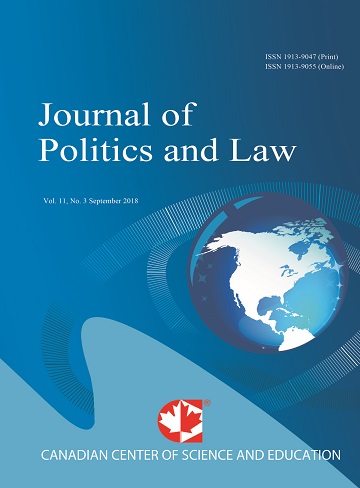The Impact of East Asia’s Nuclear Energy Development Program on Southeast Asia Countries
- Mohamad Faisol Keling
- Otto F. Von Feigenblatt
- Mohd Na’eim Ajis
- Md. Shukri Shuib
- Achmad Dzariean Mohd Nadzri
Abstract
Commonly countries around the world view nuclear development in a negative light; that is threatening to national security. The nuclear disaster that happened on August 1945 in Japan, sacrificing over 200,000 lives and the explosion at Chernobyl nuclear plant in Ukraine on 26 April 1986 has drawn the attention of world community on the consequence of nuclear as energy resource (Ku Seman Ku Hussain, 2005). In actual fact, nuclear is an energy source providing positive impact to economic, politics and progress of a nation. Unfortunately, nuclear resources had been misconstrued and have become one of the factors that led Third World countries development process rate to lag behind developed countries. The spread of nuclear energy resources to Third World countries especially countries in the Asia-Pacific region at the moment is as a result of world community’s awareness with interest and concern in developing nuclear energy as an alternative energy resource. The successful of several Develop Countries such as Japan and Third World countries such as South Korea, Brazil, India and Pakistan who have developed their own nuclear power have change the perception of the other Third World countries about the importance of nuclear power. This scenario brought effect and provides an opportunity to Malaysia to start paying attention on nuclear energy resource development.
- Full Text:
 PDF
PDF
- DOI:10.5539/jpl.v3n2p176
Journal Metrics
h-index (2017): 14
i10-index (2017): 39
h5-index (2017): 9
h5-median (2017): 11
Index
- Academic Journals Database
- ACNP
- ANVUR (Italian National Agency for the Evaluation of Universities and Research Institutes)
- Berkeley Library
- CNKI Scholar
- COPAC
- CrossRef
- DTU Library
- EBSCOhost
- Elektronische Zeitschriftenbibliothek (EZB)
- EuroPub Database
- Excellence in Research for Australia (ERA)
- Genamics JournalSeek
- GETIT@YALE (Yale University Library)
- Ghent University Library
- Google Scholar
- Harvard Library
- HeinOnline
- INDEX ISLAMICUS
- Infotrieve
- Jisc Library Hub Discover
- JournalGuide
- JournalTOCs
- LOCKSS
- MIAR
- Mir@bel
- NewJour
- Norwegian Centre for Research Data (NSD)
- Open J-Gate
- PKP Open Archives Harvester
- Publons
- Pubmed journal list
- RePEc
- ROAD
- Scilit
- SHERPA/RoMEO
- Standard Periodical Directory
- Stanford Libraries
- UCR Library
- Ulrich's
- UniCat
- Universe Digital Library
- UoS Library
- WorldCat
- Zeitschriften Daten Bank (ZDB)
Contact
- William TaiEditorial Assistant
- jpl@ccsenet.org
